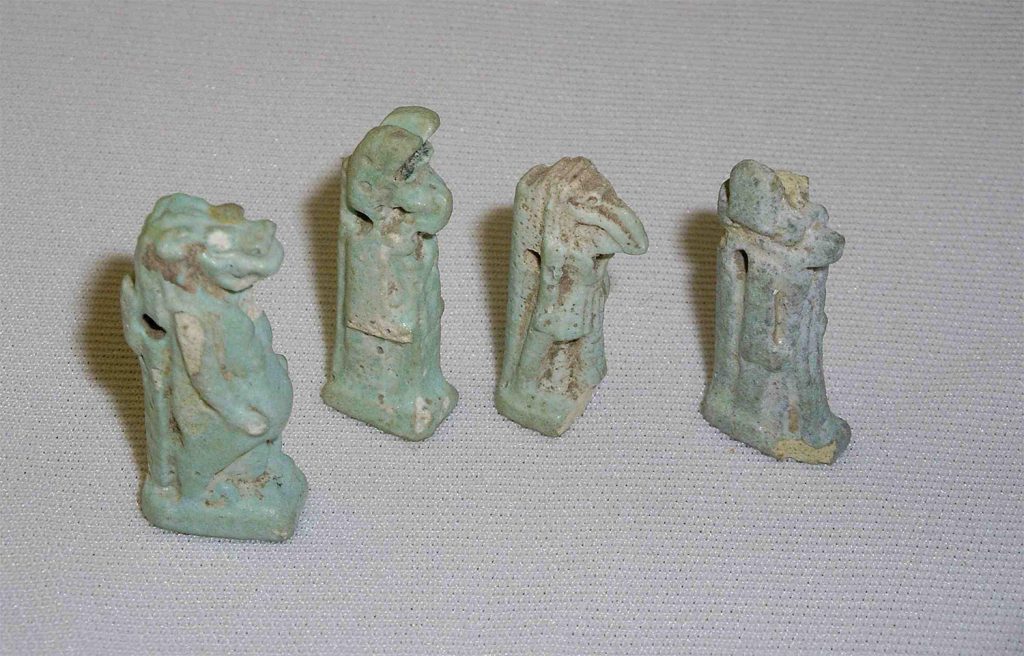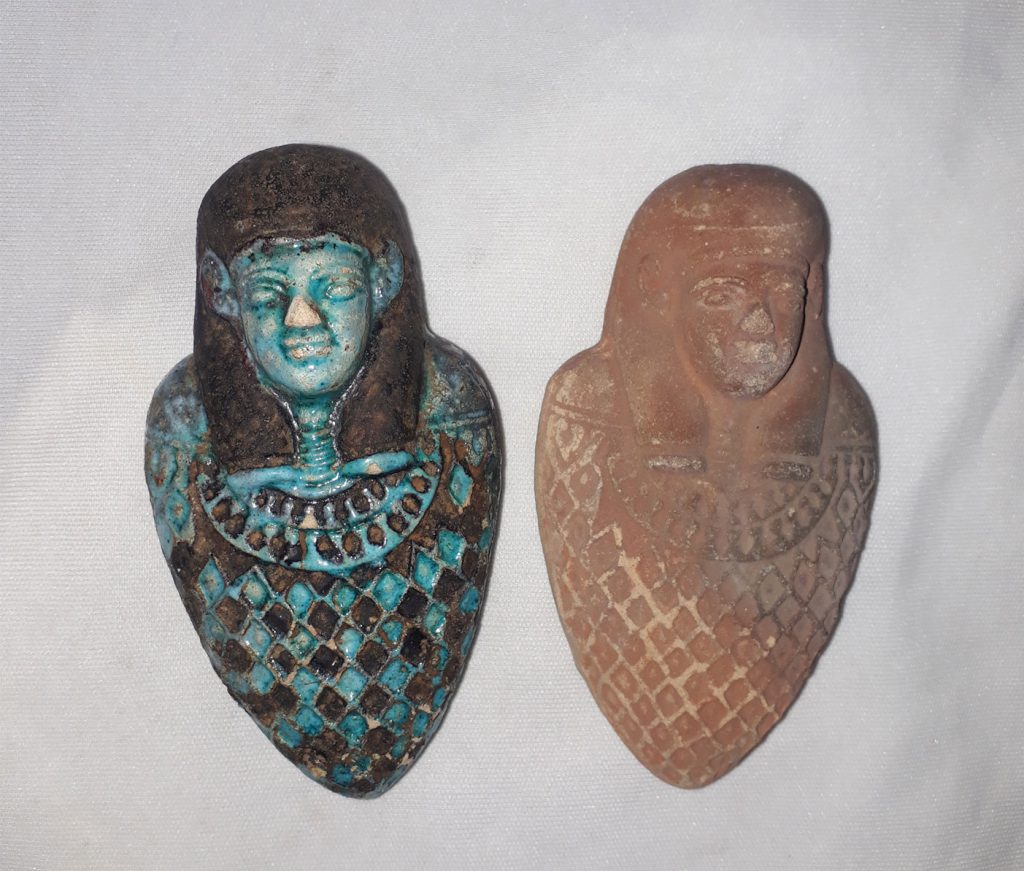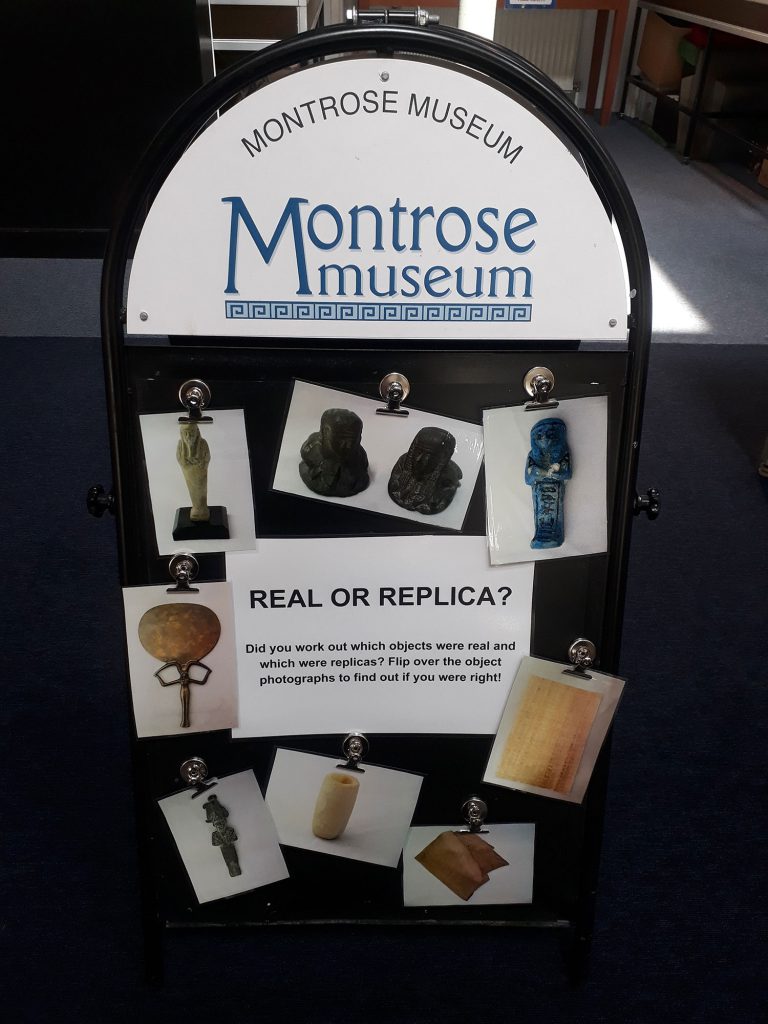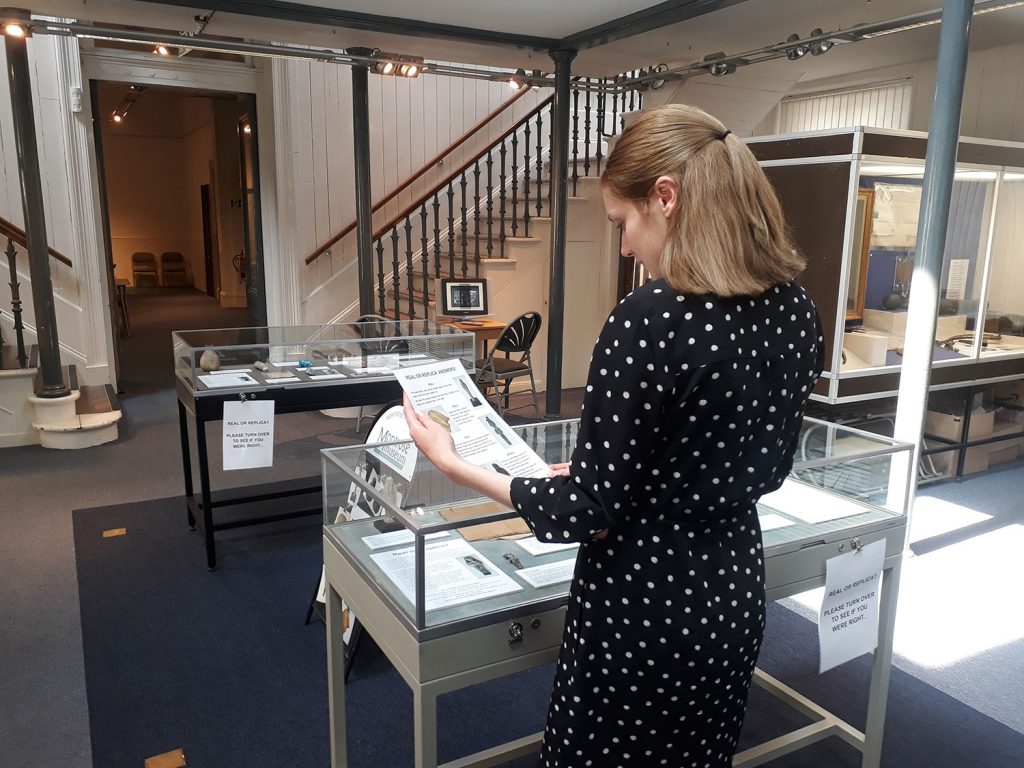How good are you at spotting real ancient Egyptian artefacts from amongst the fakes? That’s what we’re asking our visitors at Montrose Museum as part of our display ‘Real or Replica?’, which we’ve created to coincide with the National Museums Scotland touring exhibition, Discovering Ancient Egypt.
Some of the key things to think about are:
1. What is it made from?
Is it made from a material that would have been available in ancient times, like faience (A quartz-based ceramic with a bright turquoise surface) or clay, or is it made from something more recent like plastic?
2. What decorations does it have?
Does it have extra features added to it? Fake objects are designed to look more appealing to potential buyers so often have extra features added to look ‘more Egyptian’. Are the hieroglyphic signs on it real or just different shapes that look like hieroglyphs? This can be slightly harder if you don’t read hieroglyphs obviously, but if there are only a few signs repeated lots then that could be a hint.
3. What was it used for?
Think how the ancient Egyptians would have actually used the object you are looking at. For example, an amulet may have a hole drilled through it so that it can be worn or tied to something. A scarab is used mostly for sealing documents, so if it is gigantic then it would be odd.
So, with this in mind, can you work out which of these amulets are real and which are replicas?


If you answered A – Group of Amulets then you are right! These four faience amulets are in the shape of different Egyptian gods and goddesses. They are very small so it can be difficult to make out which is which but the one with a hippopotamus body is Taweret, the goddess of childbirth and fertility. The one shaped like an ibis bird is Thoth, the god of the moon, writing and learning.
B – Heart Scarab Amulets are the modern fakes. They are imitating a heart scarab, an amulet placed on your heart when you were buried to help you into the afterlife. However, their overall design is unlike any real ancient Egyptian artefact as they look like strawberries with heads! The chequerboard pattern is very un-Egyptian and having one that is painted and one that is not is a dead giveaway.
I decided to do a display in this way because one of the things I like best about working at Montrose Museum is that I sometimes get to be a detective. Whether I’m researching a particular time period for an exhibition or identifying a mystery object brought into the museum, I love that feeling of excitement when I work out a clue to the past for myself.
When I attended a National Training Programme workshop on ancient Egyptian history at National Museums Scotland, ahead of the Discovering Ancient Egypt touring exhibition coming to Montrose Museum, Dr Dan Potter taught us about how to date shabtis (tomb figurines) and then got us to work out when they were from ourselves. This gave me the idea to use this detective style approach for a display to show more of Montrose Museum’s ancient Egyptian collections alongside Discovering Ancient Egypt. Through the display, our visitors could become historical detectives and work out for themselves which artefacts were the real deal.


When a lot of the objects that form ‘Real or Replica?’ were collected, the tourists and visitors to Egypt may not have been too bothered about having bought something truly ancient, they may simply have wanted to have a souvenir that looked Egyptian. Then again, they may not have had the clues that we have now…
‘Real or Replica?’ has been very popular amongst people of all ages. I especially enjoy it when groups of visitors make it into a competition amongst themselves over who can spot the real artefacts with the highest accuracy! It’s a much more interactive way of displaying artefacts and appeals to people of all ages. If you’d like to try your hand at a bit of museum detective work then come along to Montrose Museum where ‘Real or Replica?’ will be on display until 23 November 2019.

Developed by National Museums Scotland with funding from The National Lottery Heritage Fund, Discovering Ancient Egypt is part of the national programme to extend the reach and impact of the new Ancient Egypt Rediscovered and Exploring East Asia galleries to audiences across Scotland. The review of Montrose Museum’s ancient Egyptian collection is supported by the Collections Fund – delivered by the Museums Association.
Discovering Ancient Egypt is on display at the Baird Institute, Cumnock from 14 September to 14 December 2019. The exhibition previously toured to Hawick Museum (8 March – 2 June) and Montrose Museum (8 June – 7 September).
If you have any questions about anything covered in this post, contact us on GACD.enquiries@nms.ac.uk